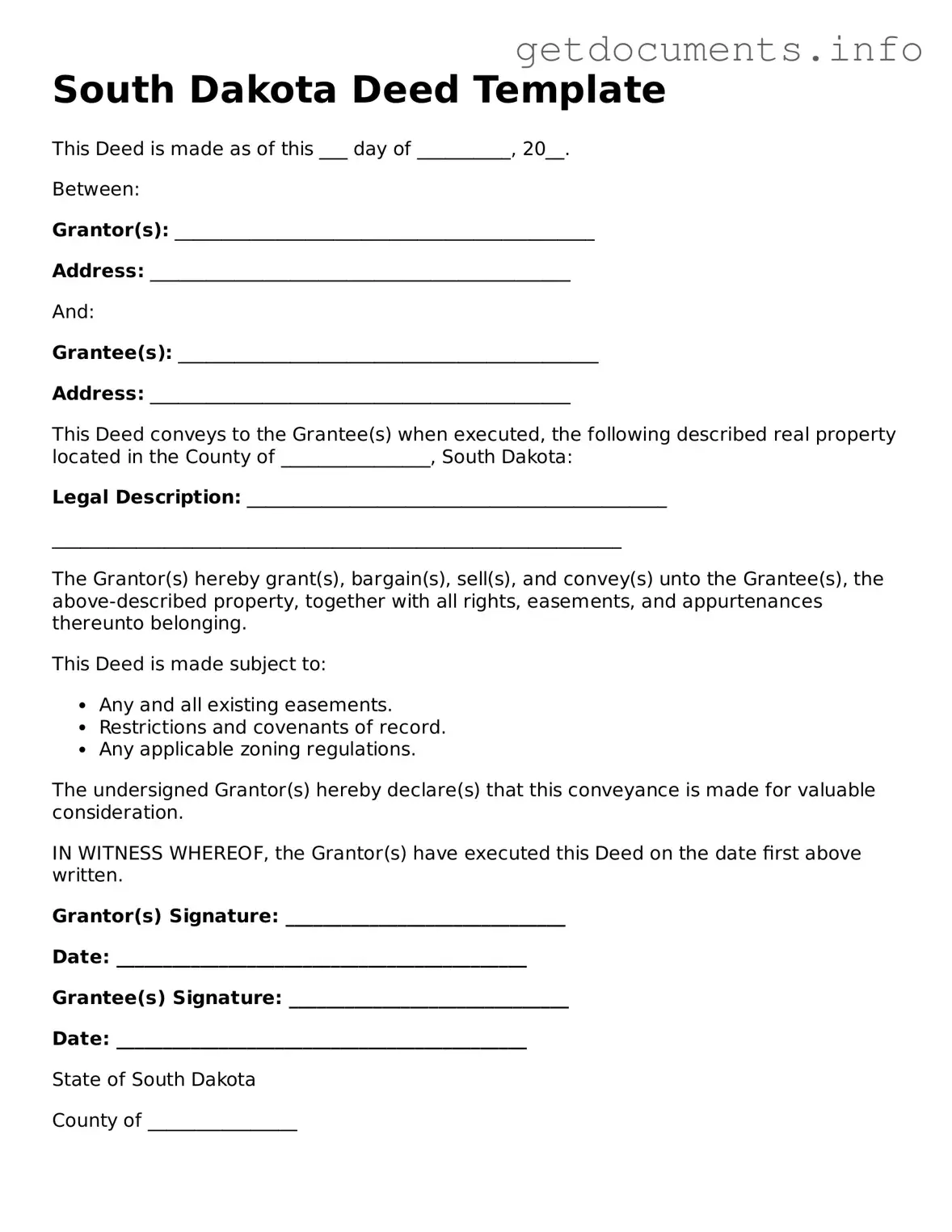Free Deed Template for South Dakota
A South Dakota Deed form is a legal document used to transfer ownership of real property from one party to another. This form outlines the details of the transaction, including the names of the parties involved and a description of the property. For those looking to facilitate a property transfer in South Dakota, filling out this form accurately is crucial.
Take the first step in your property transaction by filling out the South Dakota Deed form. Click the button below to get started.
Access Deed Editor
